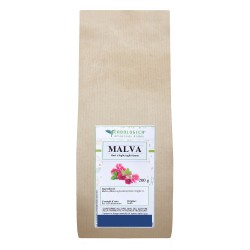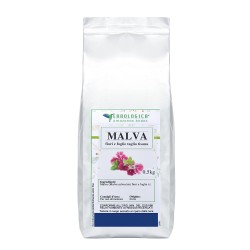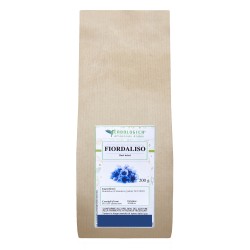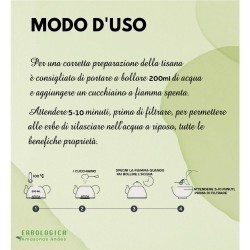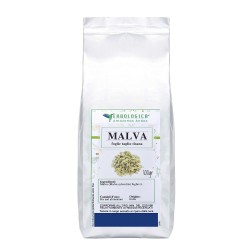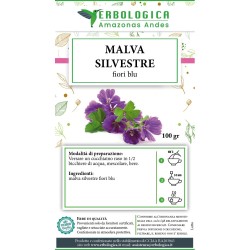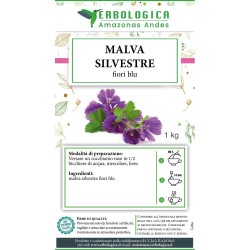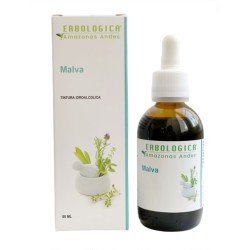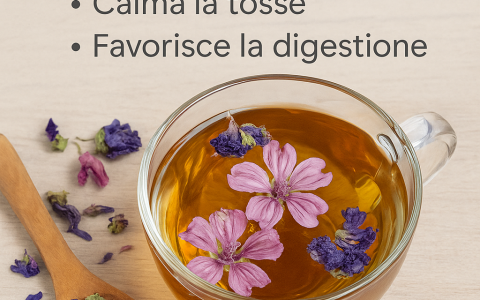
Tisana alla Malva e Fiori: benefici, usi e ricetta naturale
Perché scegliere la tisana alla malva
La tisana alla malva è uno dei rimedi naturali più conosciuti e apprezzati per il benessere dell’apparato digerente, urinario e respiratorio.
La malva (Malva sylvestris) è una pianta officinale dai fiori viola ricchi di mucillagini, che le conferiscono proprietà lenitive e antinfiammatorie.
Abbinata ad altri fiori officinali, diventa una bevanda salutare e piacevole da gustare in qualsiasi momento della giornata.
Prova la Malva foglie e fiori Erbologica, essiccata e naturale, ideale per tisane depurative e calmanti.
Proprietà della malva
I fiori e le foglie della malva contengono mucillagini, flavonoidi, tannini e vitamine. Questi composti agiscono in modo delicato ma efficace:
Lenitiva: calma irritazioni delle mucose della gola e dello stomaco.
Emolliente: ammorbidisce le secrezioni, favorendo l’espulsione del muco in caso di tosse o raffreddore.
Digestiva: riduce acidità, reflusso e bruciori gastrici.
Depurativa: stimola la diuresi e aiuta a liberare l’organismo da tossine e liquidi in eccesso.
Rilassante: calma tensioni nervose e favorisce un sonno sereno.
Scopri anche la nostra Tisana depurativa Erbologica per potenziare l’azione detox in abbinamento alla malva.
Benefici principali della tisana alla malva e fiori
La tisana alla malva può essere potenziata con altri fiori e piante officinali:
Camomilla → azione calmante, perfetta la sera.
Calendula → proprietà antinfiammatorie e lenitive per la pelle.
Fiordaliso → utile per il benessere della vista e come drenante.
Tiglio → rilassante e calmante, ideale contro ansia e insonnia.
Questa sinergia di erbe trasforma una semplice tisana in un elisir naturale di benessere, da gustare calda o tiepida.
Ricetta della tisana alla malva e fiori
Ingredienti per 2 tazze:
1 cucchiaio di malva essiccata. Acquistala qui Malva fiori Erbologica
1 cucchiaino di fiori di camomilla
1 cucchiaino di fiori di tiglio
1 cucchiaino di calendula
Preparazione:
Porta a ebollizione 400 ml di acqua.
Versa le erbe in una teiera o tazza capiente.
Aggiungi l’acqua bollente e lascia in infusione 8–10 minuti.
Filtra e gusta calda, dolcificando con miele se desideri.
Vuoi scoprire altre combinazioni? Prova anche la nostra Tisana rilassante.
Come assumere la tisana alla malva
Per la digestione: una tazza dopo i pasti principali.
Per gola irritata e tosse: 2–3 tazze al giorno calde.
Per favorire il sonno: una tazza la sera, mezz’ora prima di coricarsi.
Come bevanda detox: 2 tazze al giorno per cicli di 10–15 giorni.
Domande frequenti
1. La tisana alla malva si può bere tutti i giorni?
Sì, è delicata e sicura. Può essere assunta anche quotidianamente.
2. Ha controindicazioni?
Solo in caso di allergia alla pianta. In gravidanza o allattamento è sempre meglio chiedere consiglio al medico.
3. È adatta ai bambini?
Sì, la malva è una delle erbe più delicate, adatta anche ai più piccoli.
4. Posso usarla fredda?
Certamente, lasciata raffreddare diventa un’ottima tisana rinfrescante estiva.
Sintesi
La tisana alla malva e fiori è un rimedio naturale versatile: calma la tosse, depura l’organismo, migliora la digestione e favorisce il relax. Un rituale quotidiano semplice, naturale e benefico che porta armonia al corpo e alla mente.
Ordina la Malva foglie e fiori Erbologica e prova subito a preparare la tua tisana.


